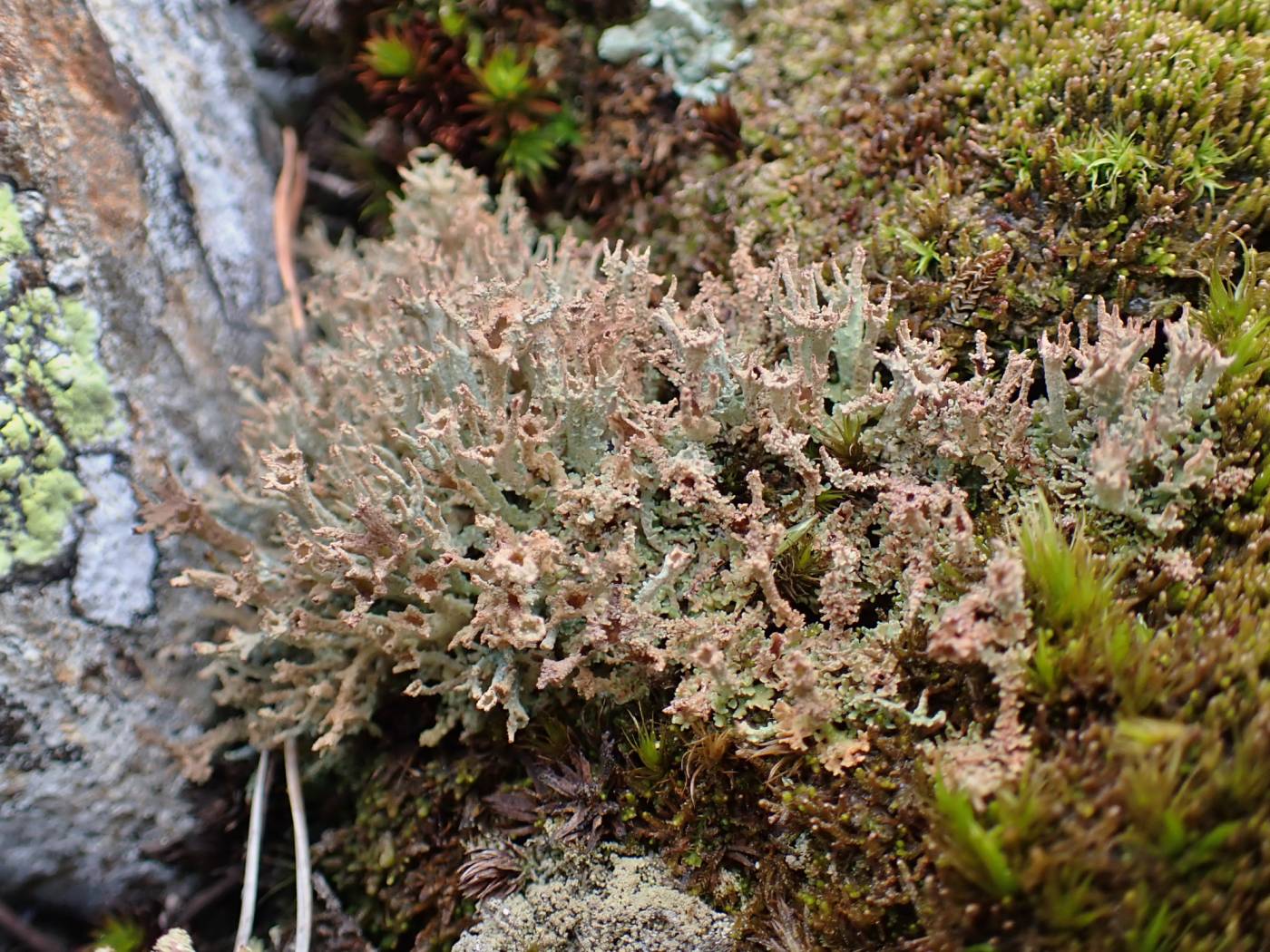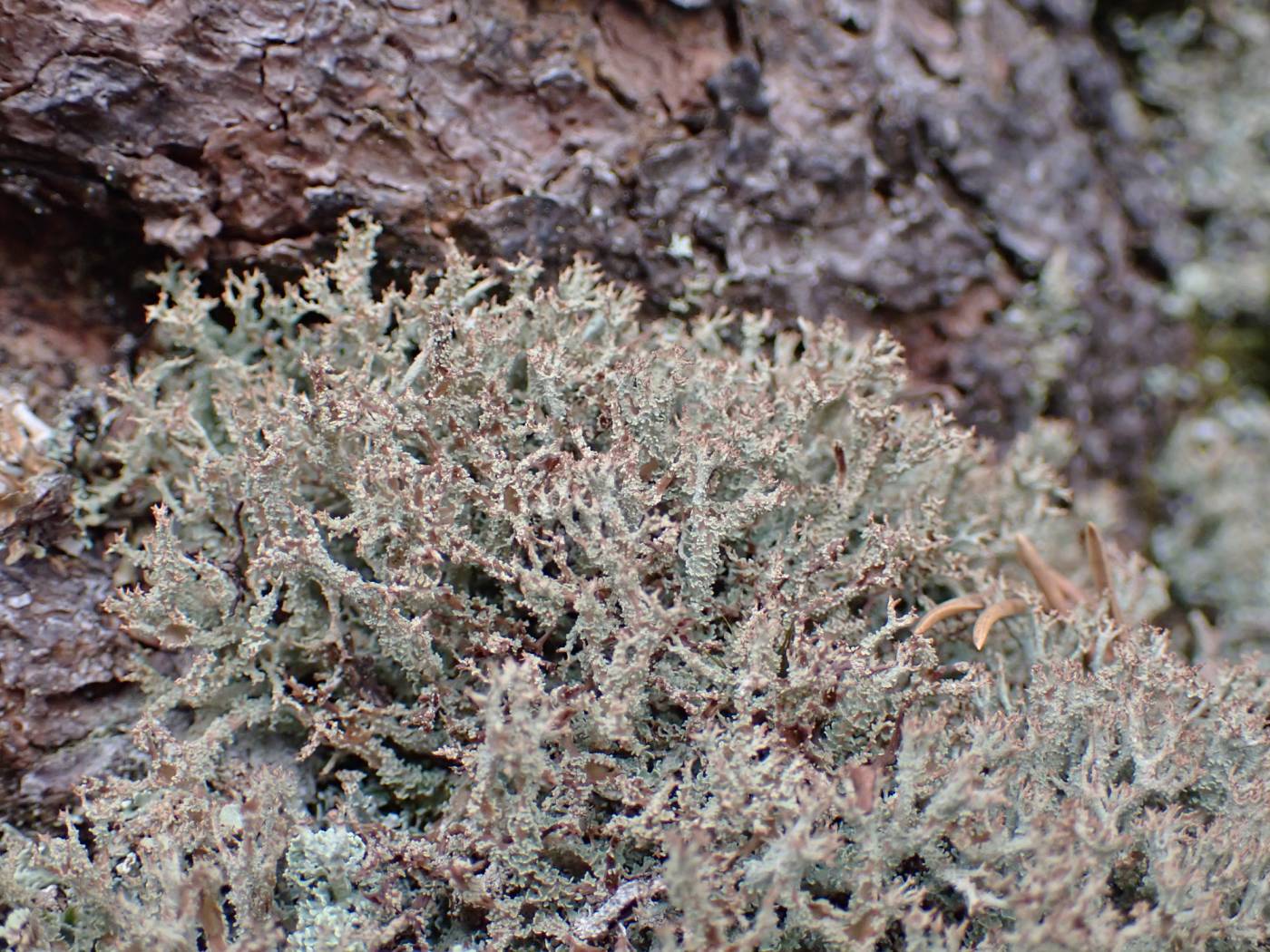A very variable species, which forms branched grey-green to brown corticate thalli and often perforated scyphi. The nominate variety crispata includes robust morphotypes richly proliferating from scyphi margins, with pycnidia on numerous spiky outgrowths protruding from the apical part of the podetium. The variety cetrariiformis includes subtle, brown, dichotomously branched morphotypes, which are more common in the Czech Republic, and may resemble Cetraria aculeata at the first sight. They might be 10 cm high or even higher. Perforated scyphi and open axils distinguish these forms from similar forms of C. gracilis (Sandstede 1931). In case of uncertainty, taste may also serve as a distinguishing character; C. crispata has a mild taste due to the absence of fumarprotocetraric acid; as well as negative spot test and UV+ white (presence of squamatic acid). However, chemotypes with barbatic or thamnolic acid are also known from abroad (Ahti & Stenroos 2013). C. crispata is very variable and numerous forms have been described, including squamulose types similar to the common C. squamosa.
It grows on acidic soil, peat, rarely also on wood and mossy rocks in montane and boreal areas. There are numerous historical records from the area of the Czech Republic, mainly from its western part (see the Vězda & Liška 1999 catalogue). The latest published records are from the 1990s from heathlands in the central Šumava Mts (Geringhoff & Daniëls 1998). There are also unpublished recent records from the Krkonoše, Šumava and České Švýcarsko National Parks, mainly from natural habitats, such as peatbogs, glacial cirques, boulder screes, relic pine forests etc. (Z. Palice & J. Malíček, unpublished). The reasons of its decline in the Czech Republic are not known. It might also be regionally overlooked and misidentified because typical well-developed morphotypes, known from northern Europe, are probably very rare here.
Literature: Sandstede H. (1931): Die Gattung Cladonia. – In: Rabenhorst L., Kryptogamenflora von Deutschland, Österreich und der Schweiz, Leipzig, Band IX, Abt. 4 (2): 1–531. Geringhoff H. & Daniëls F. J. A. (1998): Vegetationskundliche Untersuchungen zu Zwergstrauch-Heiden in Gebirgslagen der Tschechischen Republik. – Tuexenia 18: 103–117. Ahti T. & Stenroos S. (2013): Cladoniaceae. – In: Ahti T., Stenroos S. & Moberg R. [eds], Nordic Lichen Flora 5: 87–89.
taxonomic classification:Ascomycota → Lecanoromycetes → Lecanorales → Cladoniaceae → Cladonia
Red List (Liška & Palice 2010):EN – endangered
Red List (Malíček 2023):C1 – critically endangered
Occurrence in the Czech Republic
All records: 19, confirmed 14. One click on a selected square displays particular record(s), including their source(s).

